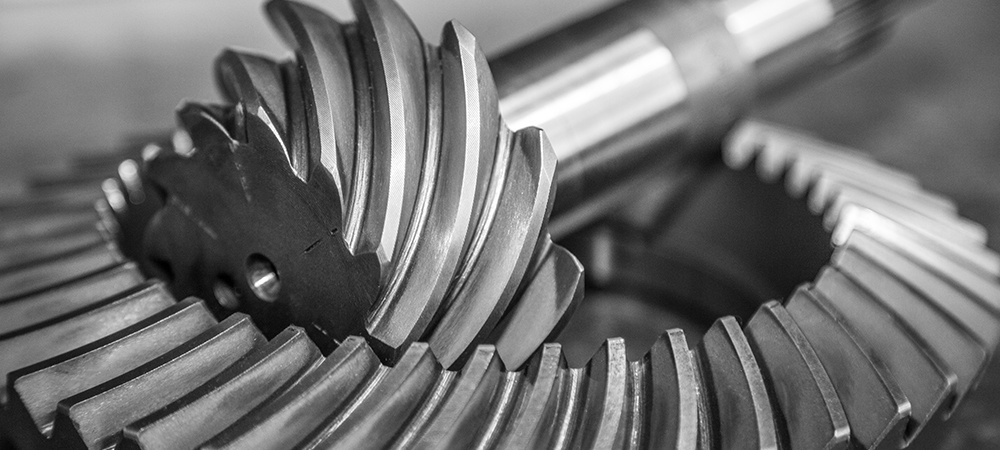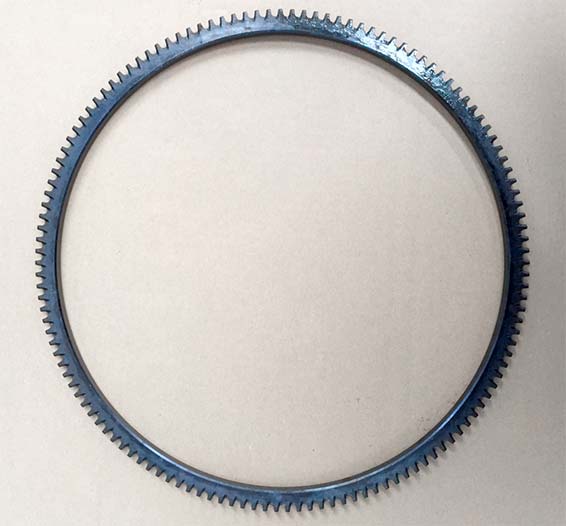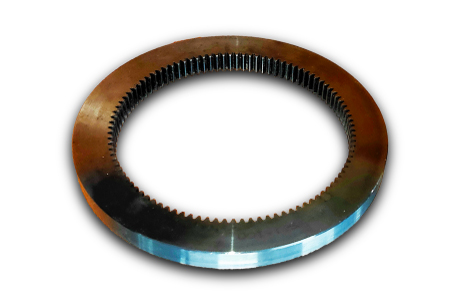Zhejiang Wenxian Gear Co., Ltd. | [email protected]
China Standard Customized High Precision Grinding 8 Class Carbon Steel Gear Ring Apply to Mining Machinery top gear
Product Description
Key attributes
Other attributes
Applicable Industries
Manufacturing Plant, Machinery Repair Shops, Energy & Mining
Weight (KG)
1650
Showroom Location
None
Video outgoing-inspection
Provided
Machinery Test Report
Provided
Marketing Type
Hot Product 2571
Warranty of core components
1 Year
Core Components
Gear
Place of CHINAMFG
ZheJiang , China
Condition
New
Warranty
1.5 years
Shape
Ring Gear
Standard or Nonstandard
Nonstandard
Tooth Profile
Spur
Material
Steel
Processing
Casting
Pressure Angle
20°
Brand Name
HangZhou
Product Name
custom large diameter alloy steel spur casting large ring gear
Application
Cement kiln
Gear Machining
Gear milling
Module of Gear:
8-120
OD For Gear Wheel:
MAX.13 000 mm
Height For CHINAMFG
MAX. 1200 mm
Certificate
ISO 9001:2015
Tolerance
+/-0.01mm
Heat treatment
QT
Surface Treatment
Surface Hardening or Carburizing and Quenching
Packaging and delivery
Packaging Details
Package for Cement kiln custom large diameter ring gear transmission alloy steel spur casting large ring gear is wooden box and adapts to CHINAMFG transport
Port
ZheJiang ,HangZhou or Others
Supply Ability
Supply Ability
9000 Ton/Tons per Year
OUR WORKSHOPS
OUR EQUIPMENTS
Technology Process
|
Material |
Carbon steel,Alloy steel |
||
|
Structure |
Forging,casting |
||
|
Type of gear |
spur gear,helical gear,Planetary Gear |
||
|
Heat treatment |
Quenching and tempering |
||
|
Process |
forging, rough machining, QT, finish machining |
||
|
Main equipments |
hobbing,CNC machine |
||
|
Module |
up to 200 |
||
|
Precision of gear |
Grinding ISO Grade 5-7 & Hobbing ISO Grade 8-9 |
||
|
Inspection |
Raw material inspection, UT,physical property test,dimension inspect |
||
|
Application |
Mining machinery, mill, kiln and other equipment |
||
OUR CERTIFICATE
OUR CUSTOMER FEEDBACK
CONTACT
/* January 22, 2571 19:08:37 */!function(){function s(e,r){var a,o={};try{e&&e.split(“,”).forEach(function(e,t){e&&(a=e.match(/(.*?):(.*)$/))&&1
| Application: | Industry |
|---|---|
| Hardness: | Hb190-Hb300 |
| Gear Position: | External Gear |
| Samples: |
US$ 100/Piece
1 Piece(Min.Order) | Order Sample |
|---|
| Customization: |
Available
| Customized Request |
|---|
.shipping-cost-tm .tm-status-off{background: none;padding:0;color: #1470cc}
| Shipping Cost:
Estimated freight per unit. |
about shipping cost and estimated delivery time. |
|---|
| Payment Method: |
|
|---|---|
|
Initial Payment Full Payment |
| Currency: | US$ |
|---|
| Return&refunds: | You can apply for a refund up to 30 days after receipt of the products. |
|---|

How do ring gears contribute to power transmission?
Ring gears play a significant role in power transmission within mechanical systems. Here’s a detailed explanation of how ring gears contribute to power transmission:
- Torque Transfer: Ring gears are designed with teeth on their outer or inner circumference, depending on whether they are external or internal ring gears. These teeth mesh with the teeth of other gears, such as pinion gears or planetary gears. As the driving gear rotates, the meshing teeth engage with the ring gear’s teeth, transmitting torque from the driving gear to the ring gear. This torque transfer enables the ring gear to rotate and transmit power to other components or systems connected to it.
- Rotational Motion: Ring gears convert the rotational motion of the driving gear into rotational motion of the ring gear itself. The teeth on the ring gear provide a positive engagement with the teeth of the driving gear, ensuring a synchronized rotation. As the driving gear rotates, the meshing teeth push against the ring gear’s teeth, causing it to rotate in the same direction and at a proportional speed determined by the gear ratio. This rotational motion is crucial for transmitting power to different parts of the system or driving various mechanisms and components.
- Speed Reduction or Increase: Ring gears, in conjunction with other gears in the system, can be used to achieve speed reduction or increase. By varying the sizes of the driving gear, the ring gear, and other intermediate gears, different gear ratios can be achieved. When the driving gear is smaller than the ring gear, the ring gear rotates at a slower speed than the driving gear, resulting in speed reduction. Conversely, if the driving gear is larger, the ring gear rotates at a faster speed, leading to speed increase. This ability to control gear ratios allows for power transmission at desired speeds and enables systems to meet specific operational requirements.
- Load Distribution: Ring gears distribute the transmitted loads across their circumference. The teeth of the ring gear engage with multiple teeth of other gears, ensuring that the load is shared among these meshing points. This load distribution helps prevent localized stress concentrations and excessive wear on specific gear teeth. By distributing the load, ring gears contribute to the overall durability and longevity of the gear system, allowing for reliable power transmission even under demanding conditions.
- Compact and Efficient Design: Ring gears offer a compact and efficient design for power transmission. Their annular shape allows for a high gear ratio within a small space, making them ideal for applications where space is limited. Additionally, ring gears can be integrated into various gear configurations, such as planetary gear systems or gearboxes, which further enhance their power transmission capabilities. This compact and efficient design contributes to overall system efficiency and performance.
Overall, ring gears are essential components in power transmission systems. Through torque transfer, rotational motion, speed control, load distribution, and their compact design, ring gears enable efficient and reliable power transmission in a wide range of mechanical applications.

How do you prevent backlash and gear play in a ring gear mechanism?
Preventing backlash and gear play in a ring gear mechanism is crucial for ensuring accurate and precise operation. Here’s a detailed explanation of how to prevent backlash and gear play in a ring gear mechanism:
- Precise Gear Design: The design of the ring gear and associated gears should be carefully engineered to minimize backlash. This involves selecting appropriate tooth profiles and gear geometry that promote proper meshing and minimize clearance between the gear teeth. The gear design should consider factors such as tooth thickness, pressure angle, and tooth contact ratio to achieve optimal gear meshing without excessive play.
- Tight Manufacturing Tolerances: Close manufacturing tolerances are essential to reduce backlash in a ring gear mechanism. The gear components, including the ring gear and mating gears, should be produced with high precision to ensure accurate tooth dimensions and minimize any gaps or play between the gear teeth. Tight manufacturing tolerances help achieve a tighter meshing fit, reducing backlash and gear play.
- Proper Gear Alignment: Accurate alignment of the ring gear and mating gears is crucial for minimizing backlash. The gears should be properly aligned along their axes to ensure precise engagement and minimize any misalignment that can contribute to play. Adequate alignment can be achieved through careful assembly techniques, such as using alignment fixtures, proper shimming, and precision measurement tools.
- Preload or Pre-tension: Applying preload or pre-tension to the ring gear mechanism can help reduce backlash and gear play. Preload involves applying a slight compressive force or tension to eliminate any clearance or gaps between the gear teeth during operation. This can be achieved through various methods, such as using spring-loaded components, adjustable shims, or axial preloading devices.
- Optimized Lubrication: Proper lubrication is essential for reducing friction and minimizing gear play. Lubricants with appropriate viscosity and film strength should be used to ensure smooth gear operation and reduce any unwanted movement or play between the gear teeth. Regular lubricant maintenance, such as monitoring oil levels and replenishing or replacing lubricants as needed, helps maintain optimal lubrication conditions and minimize backlash.
- Mechanical Backlash Compensation: In some applications, mechanical compensation mechanisms can be employed to actively compensate for any residual backlash. These mechanisms can include systems with adjustable clearances, anti-backlash devices, or dual-gear arrangements that counteract the effects of backlash. Mechanical backlash compensation techniques can help maintain precise positioning and eliminate any undesired play in the gear mechanism.
By implementing these measures, it is possible to significantly reduce or eliminate backlash and gear play in a ring gear mechanism. Careful gear design, tight manufacturing tolerances, proper alignment, preload or pre-tension, optimized lubrication, and mechanical compensation techniques all play a role in ensuring accurate and precise operation of the ring gear mechanism.

What are the applications of ring gears?
Ring gears, also known as annular gears or internal gears, have a wide range of applications across various industries and mechanical systems. Here’s a detailed explanation of the applications of ring gears:
Ring gears are commonly used in numerous applications where rotational motion, torque transmission, and load distribution are essential. The unique design and characteristics of ring gears make them suitable for a variety of mechanical systems. Here are some common applications of ring gears:
- Automotive Transmissions: Ring gears are extensively used in automotive transmissions, particularly in automatic and manual transmissions. They are part of the gear train that transfers rotational motion and torque from the engine to the wheels. Ring gears in automotive applications are typically large in size and designed to handle high torque loads.
- Differential Systems: Ring gears play a crucial role in differential systems found in vehicles. The differential assembly allows the wheels on an axle to rotate at different speeds while distributing torque evenly. Ring gears form an integral part of the differential assembly, enabling torque transfer and speed differentiation between the drive wheels.
- Planetary Gear Systems: Ring gears are a fundamental component in planetary gear systems, which are widely used in various applications. Planetary gear systems consist of a central sun gear, planet gears, and a ring gear. The ring gear serves as the outer ring that meshes with the planet gears and the sun gear. Planetary gear systems offer high gear ratios, compactness, and versatility, making them suitable for applications such as automotive transmissions, industrial machinery, and aerospace systems.
- Industrial Machinery: Ring gears find extensive use in industrial machinery for power transmission, motion control, and speed regulation. They are employed in equipment such as gearboxes, speed reducers, hoists, conveyors, and rotary tables. Ring gears enable efficient torque transmission, precise motion control, and load distribution in these industrial applications.
- Robotics and Automation: Ring gears are utilized in robotics and automation systems for precise motion control and synchronization. They can be found in robotic arms, automated assembly lines, CNC machines, and other robotic applications where accurate positioning and precise motion are critical. Ring gears provide the necessary torque transmission and gear reduction required for precise robotic movements.
- Power Generation: Ring gears are used in power generation equipment, such as wind turbines and hydroelectric generators. They form part of the gearboxes that convert the rotational motion of the turbine or generator rotor into electrical energy. Ring gears in power generation applications need to handle high torque loads, operate reliably, and provide efficient power transmission.
- Heavy Machinery and Construction Equipment: Ring gears are employed in heavy machinery and construction equipment, including excavators, cranes, mining equipment, and agricultural machinery. They facilitate the transmission of power and torque for various functions, such as lifting, digging, and material handling. Ring gears in these applications are designed to withstand high loads, rugged environments, and demanding operating conditions.
These are just a few examples of the applications of ring gears. Their versatility, load-carrying capacity, compact design, and ability to achieve high gear ratios make them suitable for a wide range of mechanical systems across industries.
The specific design, size, and material selection of ring gears may vary depending on the application requirements, operating conditions, and performance specifications.


editor by Dream 2024-04-26
